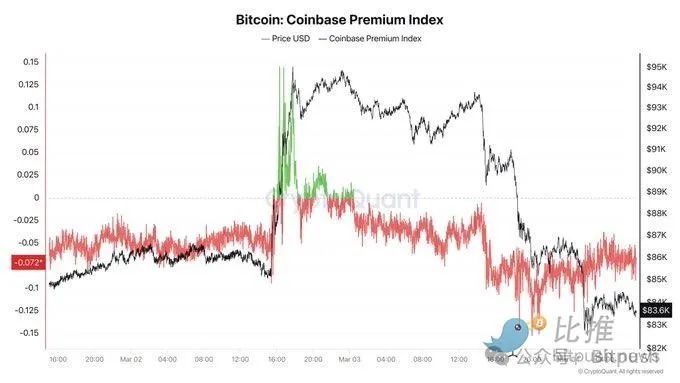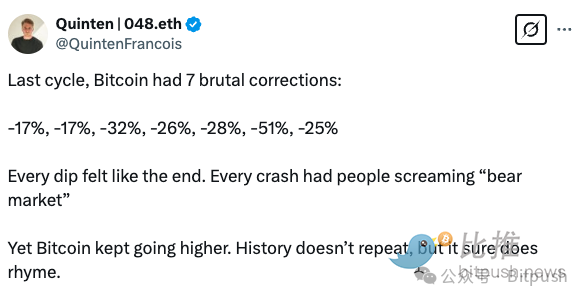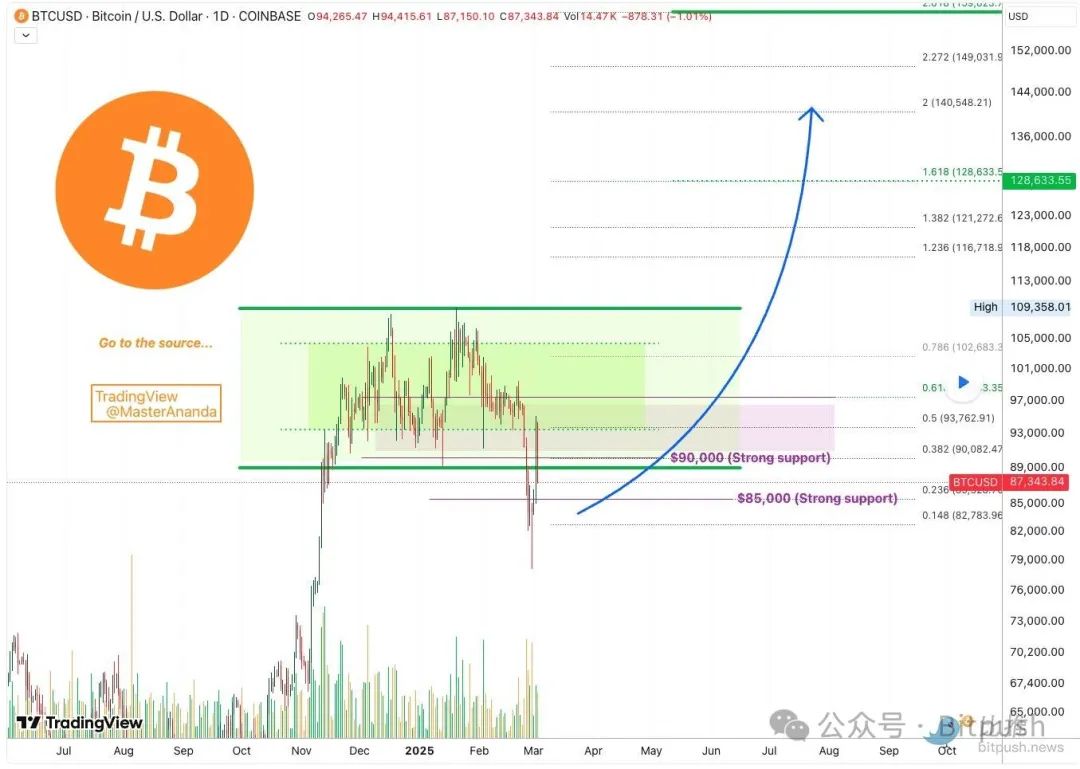After several days of thrilling fluctuations, risky assets reversed overnight.
According to Bitpush data, in the past 24 hours, Bitcoin (BTC) rebounded from the lowest point of the day at $81,500 to more than $88,000, with a daily increase of nearly 10%. At the same time, the three major stock indexes narrowed their losses, with the Nasdaq closing down to 0.35%.

The tug-of-war between market sentiment and the macroeconomy
The recent market is stalemate. After Bitcoin rebounded from the low of $78,000 on February 21 to $95,000, it then fell back to around $81,000. The long and short sides are in a tug of war, and the market direction is unclear. Although Trump's "pro-crypto" statement once boosted market confidence, its impact was ultimately short-lived and failed to reverse the overall market weakness. Potential macroeconomic risks are still the "Sword of Damocles" hanging over the market.
Ki Young Ju, CEO of CryptoQuant, believes that the Bitcoin market may continue to linger in a downturn until there is a substantial improvement in US market sentiment. Under the influence of multiple factors such as unclear regulatory policies, complex and changing macroeconomic environment, and continued volatility in investor sentiment, it remains unknown whether Bitcoin can maintain a high level for a long time. Before a stronger market catalyst emerges, Bitcoin may continue to fluctuate in a wide range, and investors need to pay close attention to market trends and capture key signals.

After the $90,000 mark was lost, bulls faced severe challenges
Despite the market's repeated attempts to rebound, Bitcoin and the entire cryptocurrency market remain under pressure and have failed to effectively establish a sustained upward trend. Many analysts have warned that if bulls want to reverse the downward trend, they must take action as soon as possible to regain key points, otherwise Bitcoin may face the risk of further decline.
However, Ki Young Ju believes that it may be too early to assert that the bull market cycle has ended. CryptoQuant's on-chain data shows that the market's on-chain activity remains relatively flat and key indicators are neutral, indicating that despite the recent market weakness, the overall bull market pattern may not have been disrupted. In addition, Bitcoin's fundamentals remain solid, and more mining machines continue to come online, which also reflects that major market participants still have confidence in Bitcoin's long-term prospects.
Ju further pointed out that if this round of bull market cycle ends here, it may not be a result that the main stakeholders in the market would like to see, including early entrants of "whale" investors, large mining companies, traditional financial institutions, and US President Trump, who publicly expressed support for cryptocurrencies. Retail investors are usually considered to be late entrants in the bull market cycle, and at this stage, their market behavior may not be enough to dominate the market direction.
$85,000 becomes a key liquidity test, will the historical cycle repeat itself?
TradingView analysts believe that the more critical support level for BTC in the short term is still $85,000, a level that has played a vital role in the market game in recent weeks.
If Bitcoin continues to trade below $85,000 in the next few days, it may trigger a larger-scale market sell-off. The concentrated release of selling pressure may cause the currency price to accelerate downward and further confirm the bearish momentum of the market. At that time, Bitcoin may face the risk of testing lower support levels.
Quinten posted on the X platform: Looking back at history may provide us with some inspiration. In the last bull market cycle, Bitcoin experienced seven large corrections, with the correction ranges being: -17%, -17%, -32%, -26%, -28%, -51%, and -25%. Each correction has caused market panic, making people feel that the "bear market" has arrived. Whenever the price drops sharply, the market is always full of arguments that "Bitcoin is dead". However, history has proven that Bitcoin has finally successfully broken through resistance and continued to climb upward. It is true that history will not simply repeat itself, but it is often surprisingly similar.

On the whole, the two key price levels of $85,000 and $90,000 will become the focus of competition between the bulls and bears in the short-term market. Investors need to pay close attention to the gains and losses of these two points in order to judge the next direction of the market.

According to analyst Master Ananda, the current market action is very “interesting” and sends out some key signals worth paying attention to:
The bottom may have been found: Last week, Bitcoin fell sharply by 28% from its historical high of $109,000, hitting a low of $78,300 and then rebounded strongly. This V-shaped reversal trend of "bottoming out and rebounding" is usually regarded as a signal of the formation of a stage bottom in the market, indicating that the possibility of further sharp declines in the short term is reduced.
Healthy correction in a bull market: After a strong bull market, it is normal for the market to have a certain degree of correction. This correction helps to release the accumulated profit in the early stage of the market and accumulate new upward momentum for the market. A healthy adjustment can lay the foundation for a longer-term bull market.
The "golden pit" of bargain hunting: The current market correction actually provides a rare entry opportunity for off-market funds. If you missed the previous rapid rise of Bitcoin from $85,000 to $95,000, then now may be a good opportunity to layout at a relatively low level. There is always a lack of opportunities in the market, and the correction is an important "accumulation stage" in the bull market cycle.
Long-term bull market trend remains unchanged: Bitcoin's long-term upward growth trend has not changed fundamentally. Based on historical rules, Bitcoin is expected to regain its upward momentum in the coming months and gradually fluctuate upward. According to previous analysts' predictions, Bitcoin still has the potential to hit the target price of $120,000 next month.
Technical indicators provide support: From the Bitcoin daily chart, the 200-day moving average (MA200) is playing a key supporting role, and MA200 has long been regarded as one of the most important technical indicators for judging the long-term trend of cryptocurrencies. The current Bitcoin price trend is forming higher lows, indicating that the bullish trend may be further confirmed.
Market sentiment and capital accumulation: This cycle is not simply driven by US government policies or geopolitical events, but is also a reflection of the market's own cyclical laws. Bitcoin is ready to enter a new round of growth and is expected to set new highs in 2025. In addition, there is still a large amount of capital waiting for an opportunity outside the market. Once the market stabilizes and rebounds, these funds are expected to accelerate their entry and further boost the market.
In summary, Bitcoin may have found its stage bottom, and the market is entering the "accumulation stage" of volatility. Although short-term market fluctuations are inevitable, the long-term bull market trend remains solid. Investors can seize the current correction opportunity, deploy in batches at relatively low levels, hold patiently, and wait for the market to finally choose a direction.





